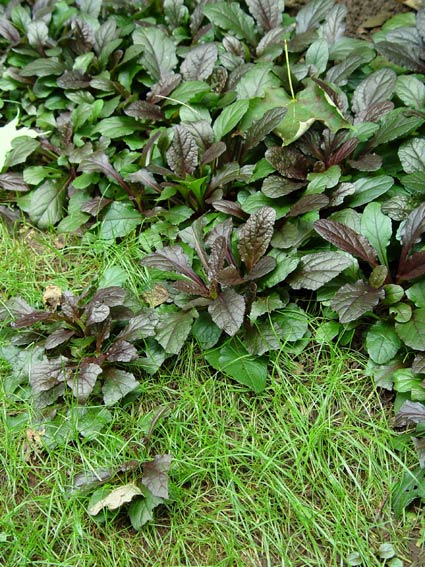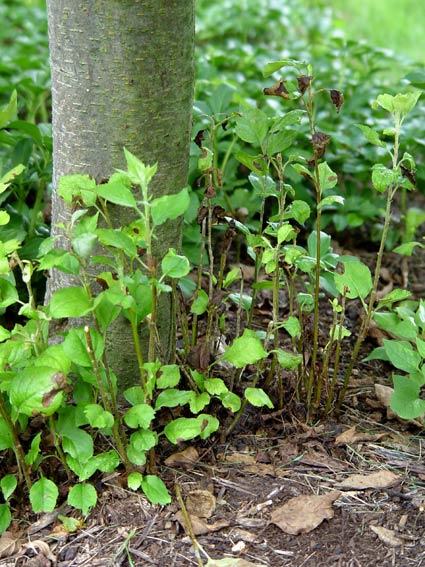How to Keep Flower Pots Vibrant in the Heat of Summer
Tips to keep your potted plants looking good, even in the dry, hot weather of July and August.
Sometimes plants seem to have minds of their own. They don't always behave the way we'd like. Sometimes they sprawl. Sometimes they creep beyond their bounds and into unwelcome territory. Sometimes they just grow a different way from what we had in mind. Part of a good gardener’s job is to guide the plants and rein in this “misbehavior” so that the garden as a whole is beautiful and does not become unkempt.
Here’s a look at five garden-control issues and how to prevent or fix the "flopsies", "trespassers", and "wrong-headed youngsters":
floppy coneflowers
Tall and top-heavy flowers like these coneflowers are notorious for flopping over in summer.

Tall and top-heavy flowers like these coneflowers are notorious for flopping over in summer.
The "Flopsies"
These happen when the flowers of a plant are too big and heavy for its stems to support. Examples: mums, sedum, peonies, asters, many hydrangeas.
The Fix: Insert wire or twiggy plant supports at the beginning of the season to "corral" stems as the plants grow.
1. If you miss that opportunity and realize the plants are flopping later, insert three short green bamboo stakes around the plants and wrap tightly with green jute to "straitjacket" the floppers back into form. (Green is less conspicuous and blends in with the leaves.)
2. Shear back perennials that have bloomed already to a few inches. This is effective with species including catmint, hardy geraniums, and threadleaf coreopsis. Fresh, compact new growth will appear in a matter of days, and you may even get a second bloom in fall. Later bloomers such as sedum, mums, and tall asters should be sheared by a half or a third in May and/or June. This delays bloom time a bit but forces and encourages more compact growth.
3. Dig and divide iris, asters, grasses, and other "flop-aparters" into smaller clumps and replant 2 to 3 feet apart. Newly divided clumps tend to stand straighter. Flopping and dying-out of the centers are two signs that perennials display signaling division time.
4. Species that still flop despite all of this may need more sun or are being grown with too much water and high nitrogen fertilizer that results in lush, floppy growth.
creeping ajuga
Some plants, like this bugleweed, creep where they're not wanted.

Some plants, like this bugleweed, creep where they're not wanted.
Some plants are assertive and creep into areas where they are unwanted. Examples: ivy, lamium, pachysandra, ajuga, sweet woodruff, leadwort.
The Fix: Set your boundaries, monitor the creepers, and at least once a year in spring or fall dig out any that spread over the line. Transplant the excised pieces to new beds, or pass them along to friends, neighbors, or local fund-raising plant sales.
Overly aggressive plants (ribbon grass, lamiastrum, houttuynia, for example) that are creating more work than an annual "shovel-out" can solve, either should have their own bed where there IS no competition, or be replaced with something more mannerly.

Many fruit trees put out "suckers" from around the base of the trunk.
These are shoots that erupt from radiating roots around shrubs (sweetspire, sweetshrub, summersweet, fothergilla, etc.) or from around trees (crabapple, cherry, pear, etc.)
suckers
Many fruit trees put out "suckers" from around the base of the trunk.
The Fix: Using a sharp shovel cut off and remove suckers that are heading into unwanted territory. De-sucker anytime, but spring or fall is best if you want to transplant the rooted pieces. For tree suckers, using a hand runner or loppers, cut them off as low as you can whenever you see them. These look messy and waste tree energy.
The shape and size of a tree or shrub might be drastically different from what you anticipated. Branches may cross, the sunnier side may grow denser, and occasional long branches may pop out here or there.
The Fix: Use pruners and loppers to remove excess and crossing branches, as well as to shorten the too-long and gangly growth. Cut immediately above a branch or bud that’s facing outward in order to control the shape. This kind of training is especially important during a plant’s early years.
Pruning time for flowering shrubs depends upon when the plant flowers. Prune early bloomers right after the flowers are spent. For later-blooming varieties (June and after), prune at the end of winter as new growth begins. Most evergreens can be pruned from early spring through mid-summer.
Some plants act almost like weeds by dropping seeds that germinate everywhere in spring. Examples of reseeding annuals include nicotiana, cosmos, cleome, and larkspur. "Frisky" reseeding perennials include campanula, coneflowers, salvias and columbines. Some shrubs and trees such as butterfly bush, rose-of-Sharon, sweetshrub, and redbud also seed freely.
The Fix: The best way to stop unwanted reseeding is by snipping off ("deadheading") the spent flowers before the seeds have a chance to mature, dry, and drop. For controlled reseeding spread removed mature seedheads where you want them to grow. Do not compost excess; remove them from the garden.